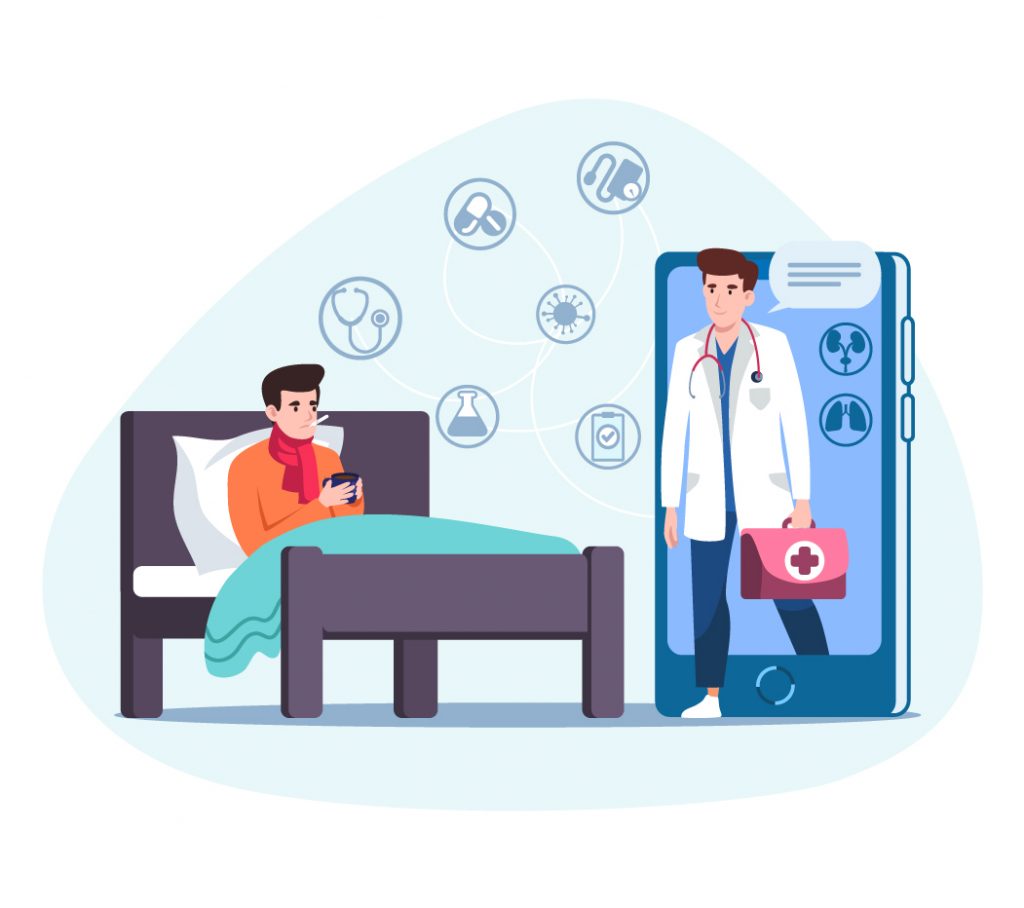A longer-living population, the emergence of transformative technologies with applications across the healthcare spectrum, and continued global economic uncertainty. These are the key societal drivers that will impact healthcare in 2024. These trends not only enhance patient care but also prioritize the well-being of healthcare professionals, ensuring a more comprehensive, accessible, and personalized healthcare experience for all. Furthermore, these trends will dictate the advancements of healthcare IT services.
1. Care Team Well-Being: Nurturing the Healers
Even before the pandemic, clinicians faced intense pressure, leading to burnout and high attrition rates. Recognizing the importance of care teams, healthcare systems are focusing on workforce planning. Restructuring workspaces and providing resources, training, and support are crucial steps. By nurturing the well-being of caregivers, we ensure they have the means to provide optimal care.

2. Patient and Care Team Partnership: Empowering Patients, Enhancing Care
Patients increasingly desire control over their healthcare journey, but communication gaps often hinder this. Integrated, collaborative care systems are emerging, placing patients within their care teams. This approach fosters active patient participation, resulting in more effective treatments and increased patient satisfaction.
3. Smart and Connected Healthcare: Harnessing Data for Precision
In an age of data, seamless integration of devices and software is paramount. The future lies in interconnected ecosystems, enabling clinicians to access patient data swiftly. This streamlined approach enhances clinical decision-making, ensuring patients receive timely and accurate care.
4. Harnessing Big Data: Transforming Information into Insights
Amidst the influx of data, the challenge lies in its analysis. Harnessing big data requires smart workflows and data specialists. By sharing data-driven discoveries across health systems, healthcare providers can make the best use of available resources. This approach optimizes patient care while clinicians focus on hands-on healthcare delivery.
5. Distributed Care: Making Healthcare Accessible and Flexible
Telehealth, mobile clinics, and in-home care have reshaped healthcare delivery, offering flexible options for patients. Digital transformation and stronger monitoring of healthcare devices promise fair, affordable services. This shift not only eases the burden on hospitals but also ensures healthcare is accessible to everyone, regardless of location.

6. Precision, Predictive, and Preventive Care: Personalized Wellness for All
The focus on wellness and preventive medicine revolutionizes healthcare. Personalized care plans, driven by technology, enable rapid diagnoses and precision treatments. This approach addresses global health disparities, offering tailored preventive care to at-risk communities. Scalable wellness and preventive programs further extend the reach of healthcare services.
7. Generative AI in Healthcare: Revolutionizing Patient Care
Generative AI democratizes transformative technologies, facilitating personalized recommendations and synthetic data creation. This innovation also enables the development of chatbots and virtual assistants, enhancing the patient journey. In genomics, AI analyzes patients’ DNA, creating personalized medicines and treatment plans, and improving patient outcomes while optimizing medical resources.
8. Convergence of Mental and Physical Healthcare: Holistic Healing
Recognizing the interconnected nature of mental and physical health, providers are adopting a holistic approach. Frontline healthcare professionals, including primary care physicians, now screen for mental health issues impacting physical ailments. This comprehensive care strategy ensures patients receive treatment that addresses both their physical and mental well-being.

9. Personalized Medicine: Tailoring Treatment Plans
Personalized medicine, powered by technology and AI, tailors treatment plans to individual patients. By analyzing patients’ DNA and other relevant data, healthcare providers create bespoke medicines and therapies, leading to better patient outcomes and more efficient resource utilization.
10. Virtual Healthcare Assistants: Enhancing Patient Engagement
Virtual assistants and chatbots play a pivotal role in healthcare. They provide advice, answer patient queries, and facilitate appointments. Moreover, they enhance patient compliance, reminding them of medications and exercises. In remote areas, these digital companions offer companionship, improving mental health and overall well-being.
Conclusion
The well-being of our care teams, the empowerment of patients, the seamless integration of technology, and the convergence of mental and physical healthcare – these elements form the cornerstone of a healthcare system that is not only advanced but profoundly human.
We can converge all of these trends into your systems and help you reach new heights in efficiency.
Connect with us at info@nalashaa.com
Mitrajit Das
Latest posts by Mitrajit Das (see all)
- Revolutionizing Healthcare Communication: The AIDET Approach - March 17, 2025